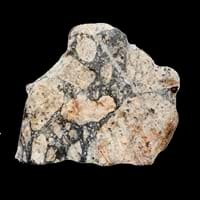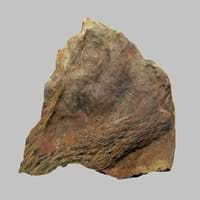Definition
Breccia is a rock consisting of angular fragments of stones which are cemented by finer calcareous material
Siltstone can be defined as a fine-grained sedimentary rock which mainly consists of consolidated silt
Discoverer
Unknown
Unknown
Etymology
From Italian, literally gravel, Germanic origin and related to break
From English word silt and stone and from Proto-Indo-European root sal and stainaz
Class
Sedimentary Rocks
Sedimentary Rocks
Sub-Class
Durable Rock, Hard Rock
Durable Rock, Hard Rock
Group
Not Applicable
Not Applicable
Other Categories
Coarse Grained Rock, Medium Grained Rock, Opaque Rock
Fine Grained Rock, Opaque Rock
Texture
Brecciated, Clastic
Clastic
Color
Beige, Black, Blue, Brown, Buff, Green, Grey, Orange, Pink, Purple, Red, Rust, White, Yellow
Brown, Red, Reddish Brown
Durability
Durable
Durable
Scratch Resistant
Yes
Yes
Appearance
Layered, Banded, Veined and Shiny
Rough
Interior Uses
Countertops, Decorative Aggregates, Entryways, Floor Tiles, Flooring, Homes, Hotels, Interior Decoration
Decorative Aggregates, Interior Decoration
Exterior Uses
As Building Stone, As Facing Stone, Paving Stone, Garden Decoration, Office Buildings
As Building Stone, As Facing Stone, Garden Decoration
Other Architectural Uses
Curbing
Curbing
Construction Industry
As Dimension Stone, Construction Aggregate, Landscaping, Roadstone
Building houses or walls, Cement Manufacture, Construction Aggregate, for Road Aggregate, Making natural cement, Raw material for the manufacture of mortar
Medical Industry
Not Yet Used
Not Yet Used
Antiquity Uses
Artifacts, Sculpture
Artifacts, Sculpture, Small Figurines
Commercial Uses
Creating Artwork, Gemstone, Jewelry
Raw material for the manufacture of mortar, Soil Conditioner
Types
Collapse Breccia, Fault Breccia, Flow Breccia, Pyroclastic Breccia, Igneous Breccia and Impact Breccia
Not Available
Features
Available in Lots of Colors and Patterns, Clasts are smooth to touch
Available in Lots of Colors and Patterns, Easily splits into thin plates, Generally rough to touch, High silica content, Very fine grained rock
Archaeological Significance
Monuments
Not Yet Used
Not Yet Used
Famous Monuments
Not Applicable
Not Applicable
Famous Sculptures
Data Not Available
Data Not Available
Pictographs
Not Used
Not Used
Petroglyphs
Not Used
Not Used
Formation
Breccia is a clastic sedimentary rock which is composed of broken fragments of minerals or rock which are cemented together by a fine-grained matrix and it forms where broken, angular fragments of rock or mineral debris accumulate.
Siltstone is a type of sedimentary rock which is formed from fine rock particles. As the particles of eroded rock travel along with water, the edges of the rock are worn-out by water into a rounded shape.
Mineral Content
Calcite, Clay, Feldspar, Phosphates, Quartz, Silica
Calcite, Clay, Clay Minerals, Feldspar, Micas, Quartz, Sand, Silica, Silt
Compound Content
Aluminium Oxide, Ca, NaCl, CaO, Iron(III) Oxide, Potassium Oxide, Sodium Oxide, Silicon Dioxide, Titanium Dioxide
Aluminium Oxide, CaO, Iron(III) Oxide, Potassium Oxide, MgO, Sodium Oxide, Silicon Dioxide
Types of Metamorphism
Burial Metamorphism, Cataclastic Metamorphism
Not Applicable
Types of Weathering
Biological Weathering, Chemical Weathering, Mechanical Weathering
Biological Weathering, Chemical Weathering, Mechanical Weathering
Types of Erosion
Chemical Erosion
Chemical Erosion, Coastal Erosion, Glacier Erosion
Grain Size
Medium to Coarse Grained
Fine Grained
Fracture
Uneven
Conchoidal
Porosity
Less Porous
Highly Porous
Luster
Dull to Pearly
Dull
Cleavage
Non-Existent
Not Available
Toughness
Not Available
2.6
Specific Gravity
2.86-2.87
2.54-2.73
Transparency
Opaque
Opaque
Density
0 g/cm3
2.6-2.7 g/cm3
Resistance
Heat Resistant, Impact Resistant, Pressure Resistant, Wear Resistant
Heat Resistant, Impact Resistant, Pressure Resistant, Water Resistant
Deposits in Eastern Continents
Asia
China, India, Kazakhstan, Mongolia, Russia, South Korea, Uzbekistan
China, India, Kazakhstan, Mongolia, Russia, Uzbekistan
Africa
Namibia, Nigeria, South Africa
Namibia, Nigeria, South Africa
Europe
Austria, Denmark, Germany, Great Britain, Netherlands, Norway, Poland, Sweden, Switzerland, United Kingdom
Austria, Denmark, Germany, Great Britain, Netherlands, Norway, Poland, Sweden, Switzerland, United Kingdom
Others
Greenland
Greenland
Deposits in Western Continents
North America
Barbados, Canada, Mexico, Panama, USA
Canada, USA
South America
Brazil
Brazil
Deposits in Oceania Continent
Australia
New South Wales, New Zealand
New South Wales, New Zealand
All about Breccia and Siltstone Properties
Know all about Breccia and Siltstone properties here. All properties of rocks are important as they define the type of rock and its application. Breccia and Siltstone belong to Sedimentary Rocks.Texture of Breccia is Brecciated, Clastic whereas that of Siltstone is Clastic. Breccia appears Layered, Banded, Veined and Shiny and Siltstone appears Rough. The luster of Breccia is dull to pearly while that of Siltstone is dull. Breccia is available in beige, black, blue, brown, buff, green, grey, orange, pink, purple, red, rust, white, yellow colors whereas Siltstone is available in brown, red, reddish brown colors. The commercial uses of Breccia are creating artwork, gemstone, jewelry and that of Siltstone are raw material for the manufacture of mortar, soil conditioner.










